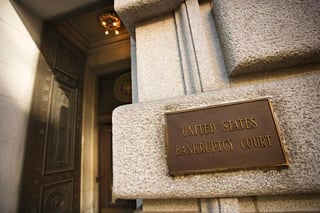 In the previous two weeks, I’ve written about the origins of bankruptcy law. In the first week, I wrote about the formation of debt forgiveness in the ancient world up to the ratification of the Constitution of the United States, and noted that the framers of the Constitution gave Congress the exclusive power to create uniform bankruptcy laws in the United States.
In the previous two weeks, I’ve written about the origins of bankruptcy law. In the first week, I wrote about the formation of debt forgiveness in the ancient world up to the ratification of the Constitution of the United States, and noted that the framers of the Constitution gave Congress the exclusive power to create uniform bankruptcy laws in the United States.
Last week I wrote about the first attempts by Congress to fashion bankruptcy law. Congress passed three different bankruptcy laws - in 1800, 1841 and 1867. All of the three laws were passed after financial panic in the United States created significant credit defaults. In every case, Congress acted to pass a law to mitigate the worst consequences of the panic, and in each case, when the financial system in the United States stabilized, Congress repealed the law. All three laws were helpful to creditors and debtors at the time the laws were passed; none of the first three attempts at bankruptcy law was perfect and in each of the three cases, when the financial panic had ebbed, the political support for sustaining and/or improving the law ebbed, also.
The Financial Panic of 1893
Another financial panic gripped the United States in 1893, and again Congress acted to pass a bankruptcy law to address the financial distress caused by the panic. The Bankruptcy Act of 1898 was different, though, in a significant respect compared to its predecessors: the 1898 law was not repealed after the financial system stabilized. Changes were made to the law periodically, but for much of the 20th Century the 1898 law governed the relationship between debtor s and creditors in the United State.
In fact, the law would not be repealed until 1978, and Congress acted at that time repealed the law to replace it with a new, more modern approach to credit default, to meet the realities of consumer credit issues that had not existed at the end of the 19th Century. So what was this law like, and why did it survive where its predecessors had not?
The Bankruptcy Act of 1898
The Bankruptcy Act of 1898 is also known as the Nelson Act, in recognition of the central role in the drafting and passage of the legislation by Minnesota Senator Knute Nelson. The 1898 law was drafted at the instigation of creditors. Commercial creditors had been pressing for a national bankruptcy law in the 1880's and the 1890's. Commercial interests, largely concentrated in the Northeast United States saw the advantages of a uniform bankruptcy law in expanding interstate commercial transactions. Commercial creditors had grown frustrated with state insolvency laws, which had different provisions and protections for both creditors and debtors state-to-state. The lack of consistency hindered commercial expansion in the United States under this view. In the 1890's the economy of the United States was becoming more industrial and less agrarian, and the world-wide economic power of the United States was growing rapidly. The lack of a uniform law to deal with the inevitable “down” cycles of the economy hurt commercial interests.
But the agrarian interests of the Southern and Western states resisted a federal bankruptcy law. Rural residents were suspicious of increasing the power of the federal government’s role in the national economy through the establishment of a federal bankruptcy law, and there was real concern that under a federal law, creditors would be able to seize the farmland (and thus a debtor’s means of making a living) from a debtor following a credit default. So while there were sound financial reasons for the establishment, in the late 19th Century there was not sufficient political support in Congress to support the passage of a national bankruptcy law without accommodating the concerns of the rural states. Although not uniformly the case, in the late 19th Century, Republican congressmen tended to support the idea of a national bankruptcy law, while Democratic congressmen tended to oppose it. Nothing would happen legislatively unless a satisfactory compromise could be reached.
Adding to the challenges already inherent in political compromise is that while there were two political parties represented in the debate, there were really three different positions: one group favored a purely voluntary bankruptcy system, in which debtors could receive bankruptcy protection, but their creditors could not force them into bankruptcy; a second group favored a “total” approach to bankruptcy, which would allow for both voluntary bankruptcies initiated by debtors and involuntary bankruptcies initiated by creditors while a third group opposed the idea of a federal bankruptcy law altogether.
What Creditors WantEd From This Law
By and large, creditors wanted to run the individual bankruptcy case, as opposed to having government-appointed officials preside over it. Creditors also wanted the law to prohibit preferential transfers by debtors to relatives, and they wanted to have the ability to force a debtor into bankruptcy through an involuntary bankruptcy process. Creditors also wanted the law to be tough on debtors, and particularly tough on debtors that had defrauded creditors in their business dealings.
But creditors weren’t the only voice being heard, politically, about this issue. There were pro-debtor forces in place in the political system, and the people sympathetic to debtors had differing ideas about the way the bankruptcy law should operate.
By the late 1890's, the financial distress that started with the 1893 panic had lasted for a prolonged period of time. There was strong popular sentiment for some sort of bankruptcy law. So Congressional leaders found a basis for a compromise: to satisfy creditors, the law would be administered by relatively low-paid, part-time referees (the ancestors of today’s bankruptcy judges). The effect of having a relatively loose administrative structure was to decrease the fees generated by bankruptcy administration. Instead of “assignees” appointed by the court to handle the day-to-day administration of the estate, the 1898 law created a “trustee” position - a position that continues to exist to this day. To satisfy creditor concerns, the 1898 law created a federal exemption scheme to give creditors and debtors a uniform law throughout all of the states for protection of debtors’s assets.
To satisfy debtor’s concerns, debtors were allowed to elect to use state law to protect property where allowed and the scope of the debtor’s discharge was broad - the debtor was discharged from all debts provided that the debtor had not engaged in fraudulent behavior.
The 1898 law did not satisfy either creditor advocates or debtor advocates entirely, but both parties received something they were looking for in the legislation. Importantly, the fact that the law was not repealed shortly after it was passed, as had happened in the three previous attempts to pass a bankruptcy law, allowed for the establishment of a “bankruptcy bar” a group of lawyers who practiced the new bankruptcy law, which led to court decisions interpreting the law, which led to more uniform administration of the bankruptcy law, which led to predictable results for both creditors and debtors.
That doesn’t mean that Congress didn’t periodically look at repealing the law. But as the law gained a toe-hold, then a foot-hold, then became a familiar area of the law, it became more and more difficult for any party pushing for repeal to be successful.
The 1898 law survived for 80 years until transition from the agrarian/manufacturing economy gave way to the service/technology economy we have today. Next week we’ll look at the 20th Century changes to the U.S. Bankruptcy Code.


